
Never before have new-car shoppers been so spoiled for choice in the small SUV space. Nearly every brand has at least one model in the fast-growing category, and those that don’t are desperately scrambling to bring something to market.
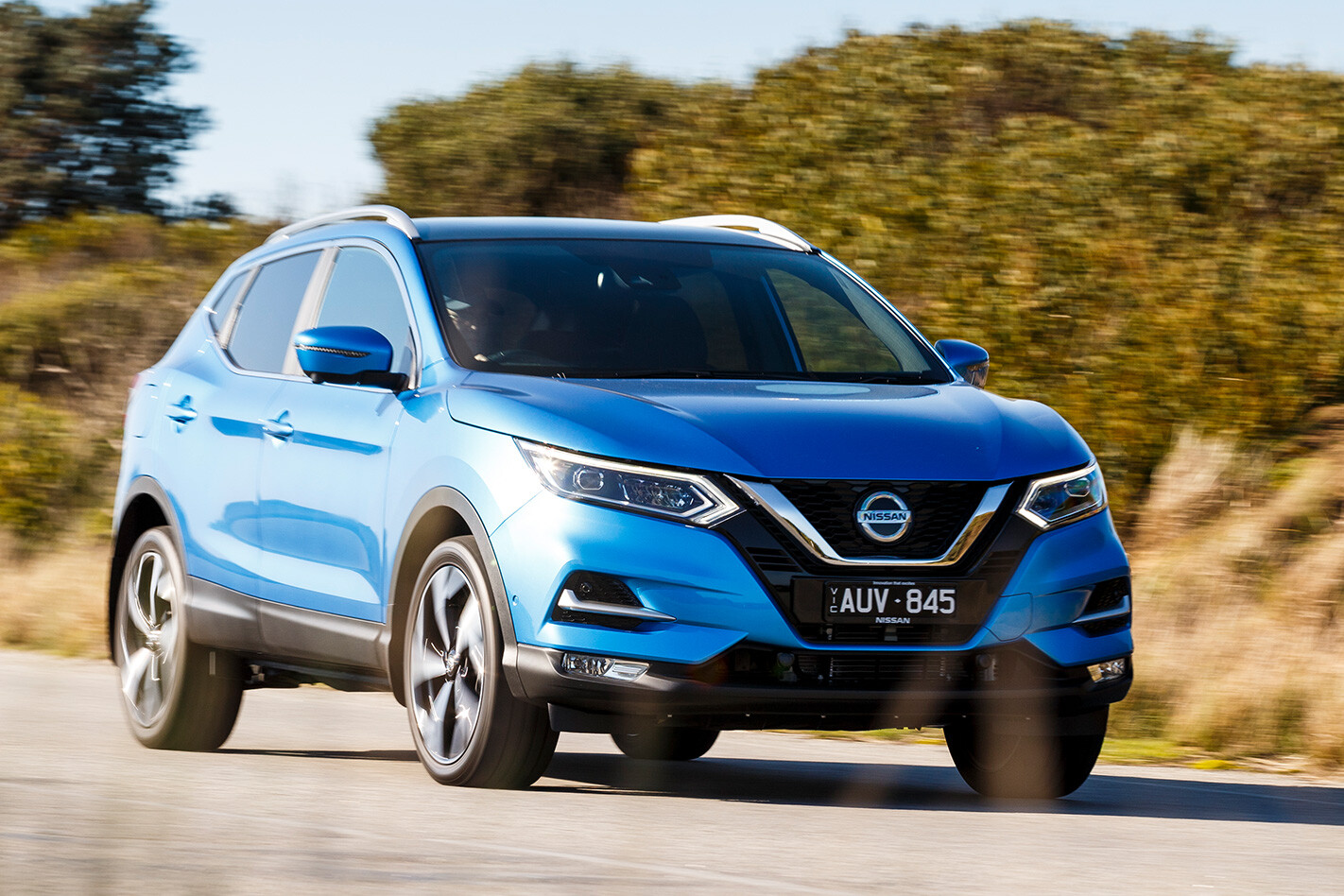
Two of the segment stalwarts are Nissan and Mitsubishi. Nissan’s been in the small SUV game for a while now, having attracted plenty of customers with the Dualis that first launched in 2007 and following up that car with the equally-popular Qashqai.
Mitsubishi, meanwhile, has been in the segment since 2010 with the high-selling ASX. The ASX is still around but at eight years old its age is definitely counting against it, and that’s where the Eclipse Cross comes in. Roughly similar in size but positioned above the ASX as a more modern and feature-rich alternative, the Eclipse Cross provides Mitsubishi with a more compelling rival to the current crop of compact crossovers.

For this pairing we’ve taken the highest-grade versions of both: the Nissan Qashqai Ti and the Eclipse Cross Exceed. Priced above $36,000, both are definitely pitched toward buyers who put a greater priority on premium features – but as it turns out, only one car delivers an experience that’s worth paying a little extra for.
How affordable are they?
Nissan Qashqai: Let’s address the elephant in the room: yes, the Qashqai Ti is an expensive thing. Retailing at $37,990 it’s priced deep into midsize-SUV territory, and runs perilously close to more premium offerings like the $41,900 Mini Cooper Countryman or $43,900 Mercedes GLA 180.
Even looking at other mainstream options, the range-topping Mazda CX-3 Akari diesel costs $100 less than the Nissan yet packs in all-wheel drive as standard. The Qashqai, meanwhile, is only available in front-wheel drive form and without a diesel option. But the Nissan justifies its price through equipment. It’s loaded to the gunwales with gear and for those that want something dependable, but very highly specified, the Qashqai Ti ticks those boxes.
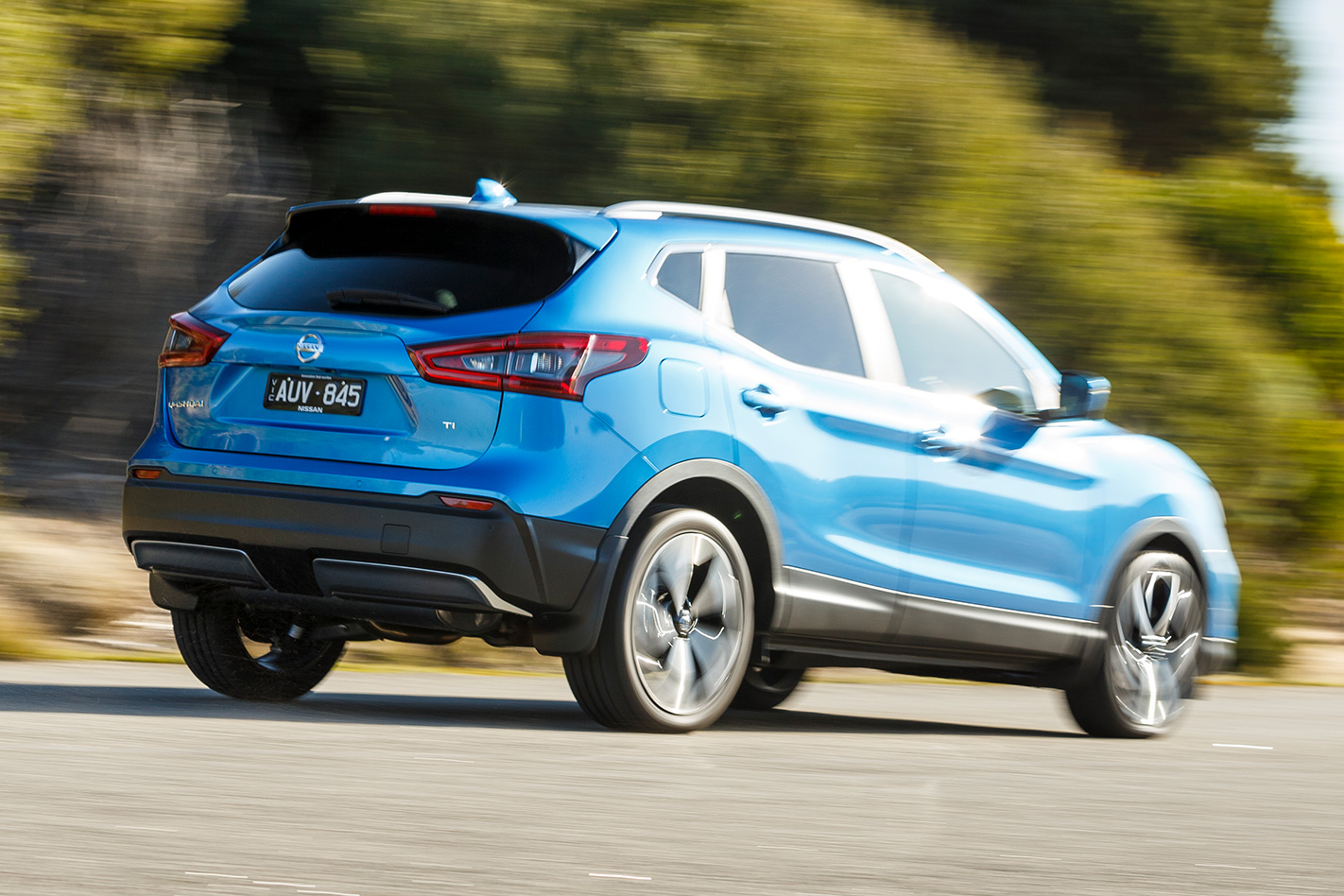
Mitsubishi Eclipse Cross: At $36,000 before on-road costs, the Eclipse Cross Exceed seems like it’s at something of a price disadvantage. That pricetag propels the Eclipse Cross, a small SUV, deep into medium SUV territory, where the competition is fierce and there’s no shortage of excellent cars to choose from.
However Mitsubishi’s strategy for its range-topping Eclipse Cross is to pack it full of equipment to help justify its cost. It’s certainly feature-rich, we’ll give it that, however there’s no additional value-adds in the form of different powertrains or mechanical improvements over the base model. An AWD option is available, but it costs $2500 more than the front-wheel drive model we’re testing here.
It is at least easy on fuel, with a manufacturer fuel consumption claim of 7.3 L/100km and the ability to run on 91 octane petrol (despite being turbocharged) helping keep running costs reasonable. There’s capped-price servicing too, with intervals set for 12 months or 15,000km and prices fixed at $300 for the first service and $400 for the next two services.
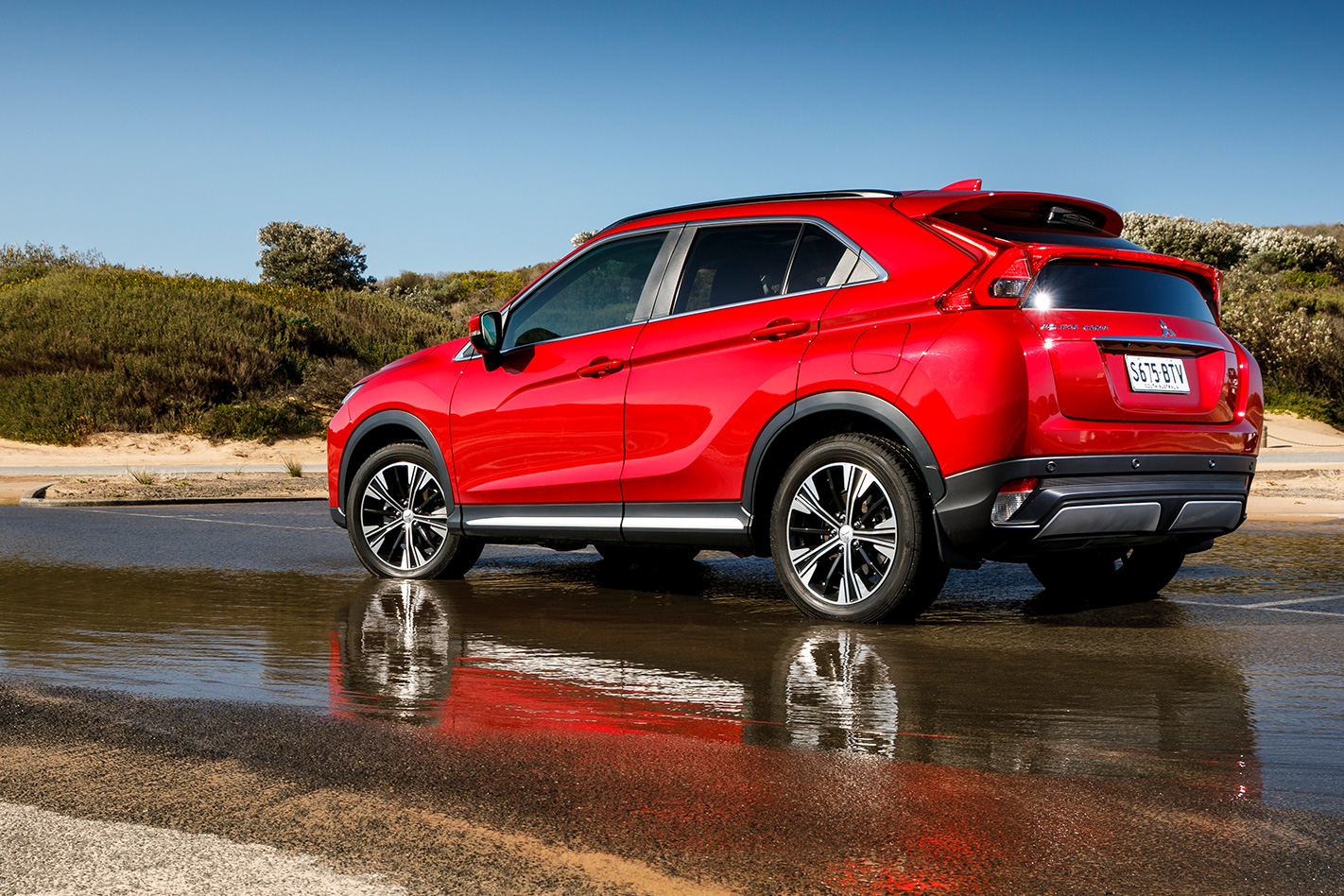
What features do they have?
Nissan Qashqai: As the flagship of the Qashqai range, the Ti variant is certainly feature-rich. In addition to the basics of power folding wing mirrors, power windows, keyless entry, dual-zone climate control and power-adjustable front seats, there’s also high-end equipment like active cruise control, a self-parking system, 360-degree camera view, adaptive headlamps and a massive panoramic glass roof.
The glass roof is definitely a highlight. It covers the heads of both front and rear seat passengers and unlike many so-called panoramic sunroofs is completely unencumbered by structural beams – it’s one big ol’ piece of glass. For those who love to soak up some rays on a Sunday drive it’s a huge selling point, literally.
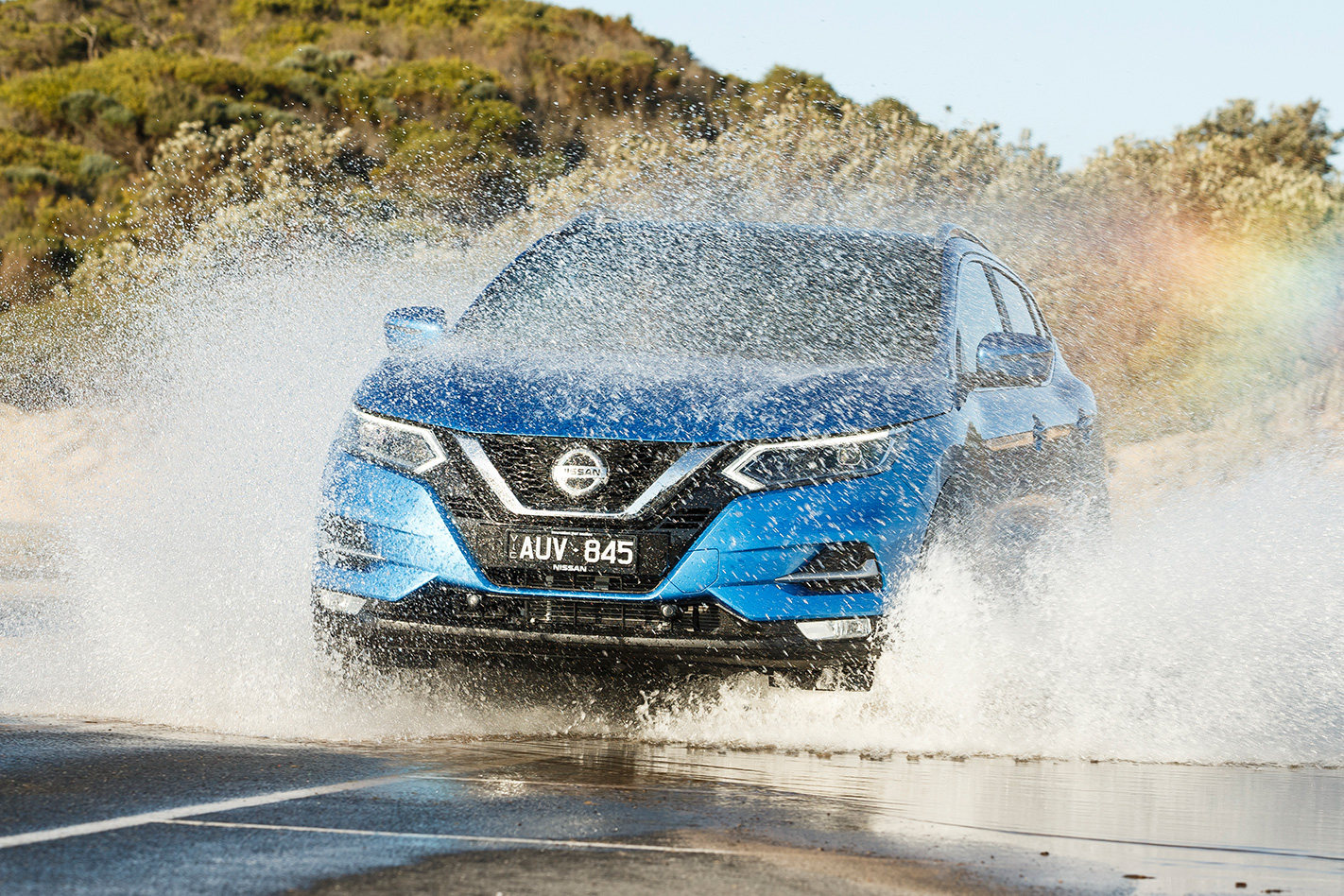
Infotainment is handled by a 7.0-inch colour touchscreen display that brings integrated satellite navigation and a digital radio tuner. Unfortunately, it’s incredibly dated in its appearance, not as responsive to inputs as other systems and doesn’t come with Apple CarPlay or Android Auto smartphone mirroring – a feature that’s fast becoming standard on mainstream vehicles. It’s one area where Nissan could absolutely improve its game.
Mitsubishi Eclipse Cross: Seemingly everywhere you look in the Mitsubishi Eclipse Cross Exceed, there are buttons. Dozens of them – certainly more than the average SUV – and it’s all because the Exceed grade is absolutely packed to its metal gills with equipment.
Standout features include a head-up display, panoramic glass sunroof, a 360-degree camera view, active cruise control, a touchscreen infotainment system, a trackpad controller for said infotainment, dual-zone climate control, smartphone mirroring, digital radio tuner, heated front seats and two USB ports – and the list doesn’t end there.
However, while the list of gear is impressively lengthy, there are some holes. The primary one is the lack of integrated satellite-navigation – fairly unforgiveable for a $36,000 car in this age, though you can at least use smartphone mirroring options like Apple CarPlay and Android Auto to get around that shortfall.

The infotainment system itself, however, is far from the best in segment for usability. The graphics already look dated, the screen is slow to respond and the touchpad controller feels like it was lifted from an old laptop. The interface is clunky, and with infotainment systems fast becoming a key selling point for new cars, the Mitsubishi’s under-done electronics hold it back.
How practical are they?
Nissan Qashqai: Sized to fit five people in reasonable – though not excessive – comfort, the Qashqai Ti dwells in the small SUV segment and is positioned below the more generously proportioned X-Trail in Nissan’s lineup. With external dimensions of 4394mm in length and 1806mm in width, the X-Trail is easy to park in average-sized car spots, driveways and garages.
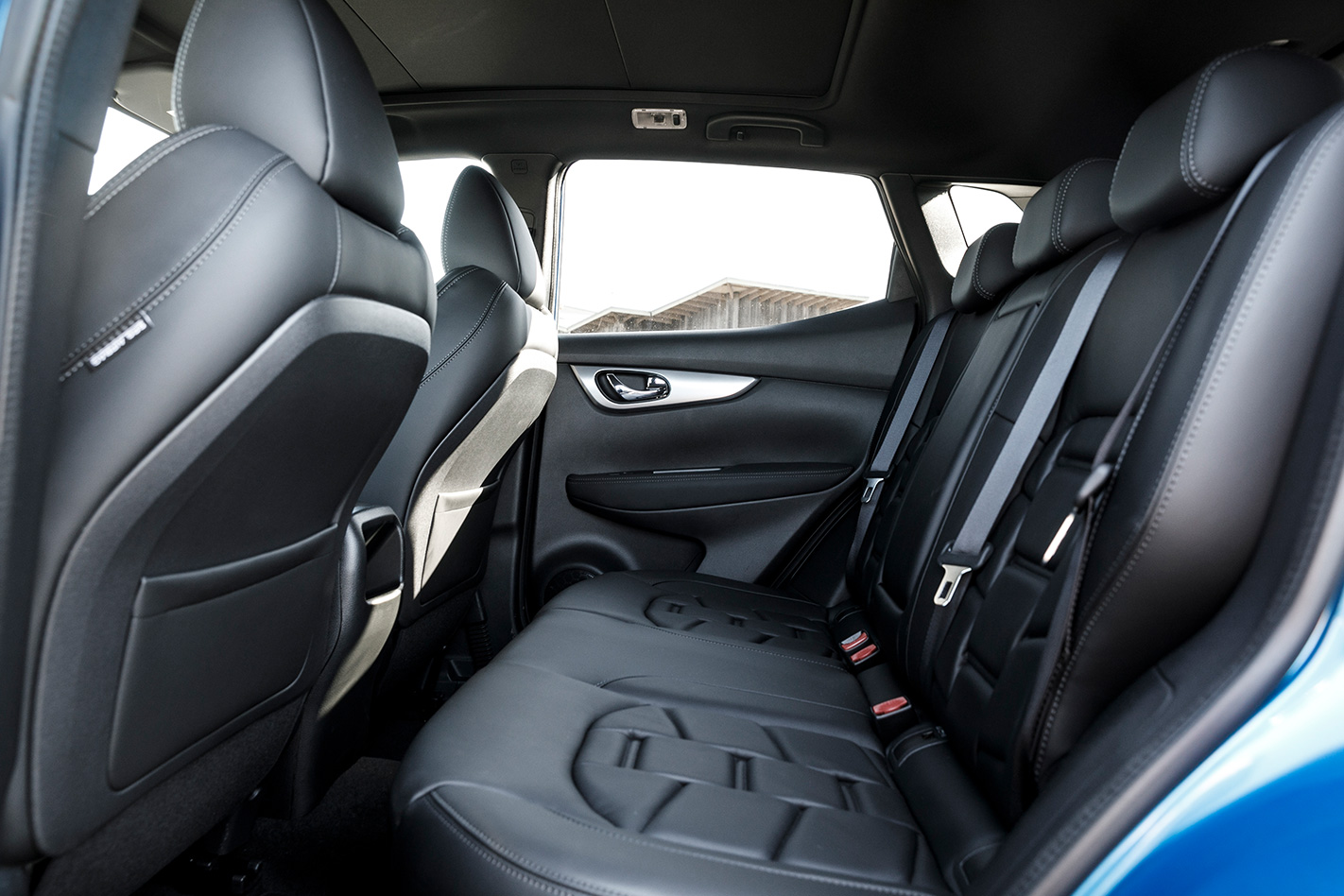
Its comparative compactness conceals a very usefully-sized boot, which offers up 430 litres of seats-up storage space or 1598 litres when the rear seatbacks are folded down.
Mitsubishi Eclipse Cross: Confused about where the Eclipse Cross sits in the Mitsubishi hierarchy? We forgive you, for the differences between the Eclipse Cross and the Mitusbishi ASX, which is also classed as a five-seat small SUV, are marginal when it comes to physical size.
The distance between the front and rear axles measures an identical 2670mm for both ASX and Eclipse Cross and there’s only 5mm difference in overall width between the two (the ASX being slightly wider. The only major dimensional disparity is in total length – the Eclipse is 4.41m long whereas the ASX is a mere 4.0cm shorter at 4.37m.
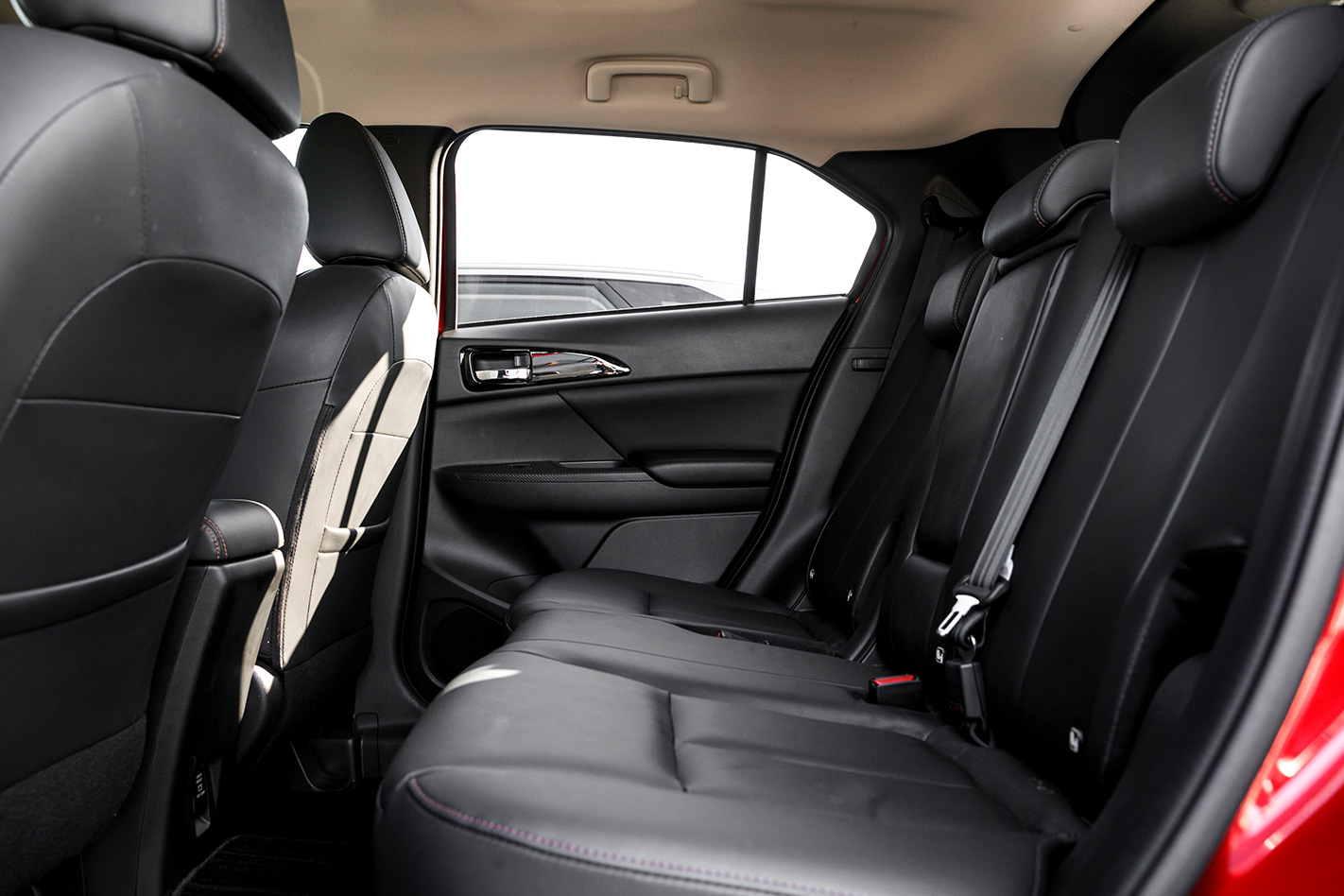
It’s a different story on the inside though, with the ASX able to tote up to 395 litres of luggage and the Eclipse Cross offering just 341 litres. Slide the rear seats forward and you can boost that to 448 litres, but that comes at the cost of legroom. Don’t have passengers to worry about? Drop the rear seats and unlock 1122L of storage – however that number is also on the small size for this segment.
How safe are they?
Nissan Qashqai: Equipped with blind spot monitoring, a forward collision warning, lane keep assist, rear cross-traffic alert and autonomous emergency braking as standard, the Qashqai Ti’s active safety suite provides more than just the usual ABS, EBD, stability control and traction control.
In the event of an accident, there are three-point seatbelts on all seats and ISOFIX child seat anchorages on the outboard rear seats, though while there are six airbags in total – the industry average – note that the head-protecting curtain airbags don’t extend to cover the second row. Airbag protection is unfortunately limited to those in the front seat.
Mitsubishi Eclipse Cross: The Eclipse Cross is well-equipped for safety, with seven airbags, ISOFIX child seat mountings on the outboard rear seats, autonomous emergency braking, anti-lock brakes, brake assist, traction control, and stability control.
The Eclipse Cross has been assessed by ANCAP and awarded five stars for crash safety.
How comfortable are they?
Nissan Qashqai: The first thing that strikes you as you enter the Qashqai Ti’s cabin is its leather upholstery. The watch-strap style folds of the Nappa leather seats are anything but your average black hide, and while it’s probably going to be a pain to vacuum crumbs out from the seat base it at least looks distinctive and high-end.
They’re heated too, which is nice in the frosty Melbourne mornings we experienced, and there’s also two-position memory settings for the driver’s seat – an invaluable argument-saver if the car is regularly driven by both members of a couple. Those front seats are also a pleasure to sit in thanks to well-sculpted cushions that support your back and bum nicely.

The rear seats aren’t quite so accommodating, given limitations in legroom and headroom (the latter impinged upon by that massive glass roof and its retractable sunblind), not to mention the absence of rear seat vents and the presence of rock-hard door card plastics. Even so, despite the cosiness of the rear bench there’s nevertheless enough room for a pair of adults to be comfortable for a while.
Mitsubishi Eclipse Cross: The Eclipse Cross has a fairly unique feature for a small SUV in that its second row can slide fore and aft, liberating legroom when you’ve got passengers to carry or freeing up some extra cargo space if you have a fair load of non-human cargo.
But that’s unfortunately about the only cabin comfort advantage it has. There’s leather upholstery for a dash of luxe, but a persistent rattle from a rear door trim in our test vehicle took the gloss off the Exceed’s semi-premium presentation.
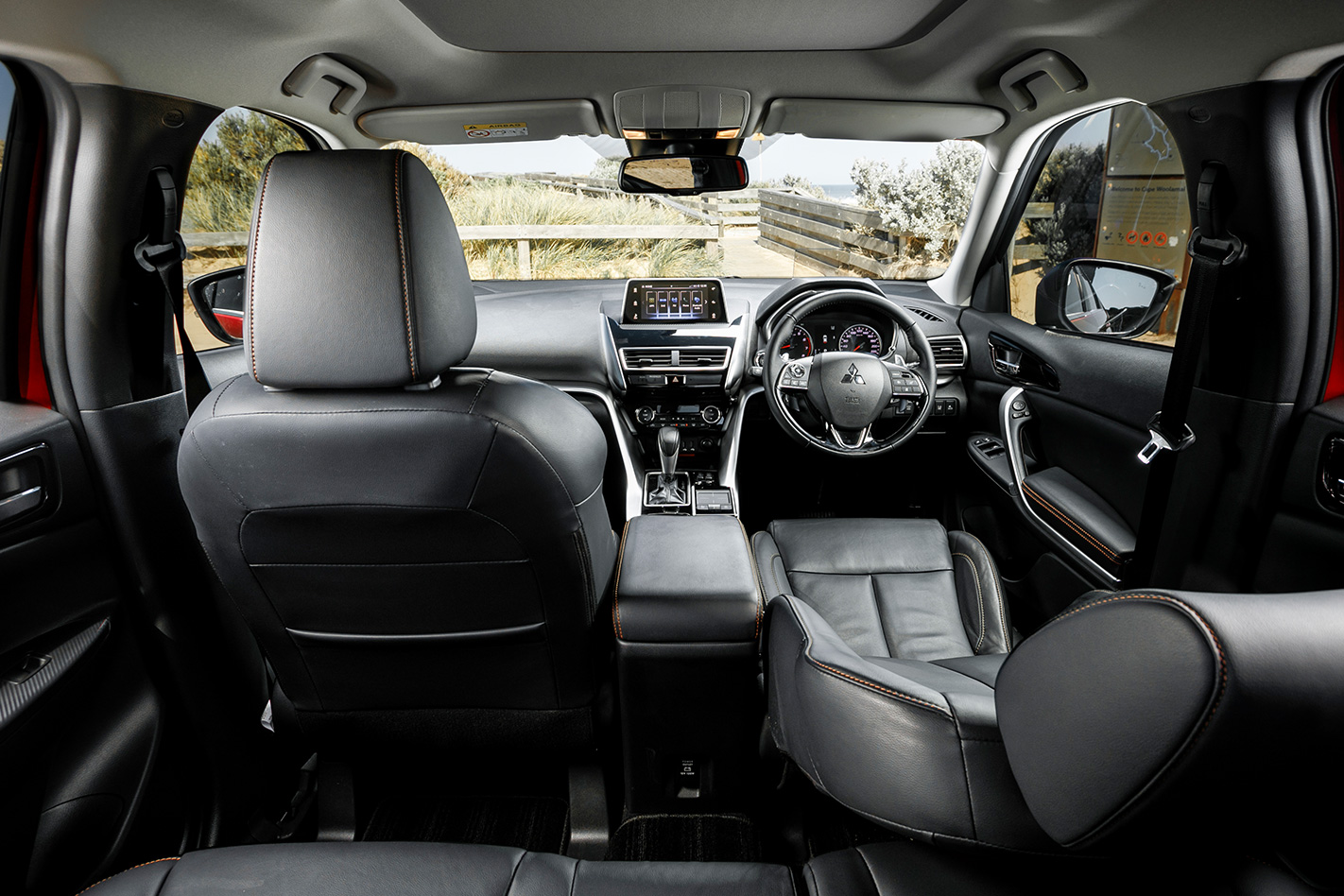
But more troublingly, the Eclipse Cross Exceed simply lacks comfort. ‘Stadium’ seating that elevates the rear seats above the front row provides backseaters with a decent view forward, but they’re hemmed in by limited headroom (both from the panoramic glass roof and the shape of the C-pillar, which cuts close to your noggin), the rear door armrests have no padding, there are no rear face-level air vents and the seat cushions are flat and unsupportive.
On top of that, there’s plenty of road noise in the back half of the car that drowns out voices and makes it difficult to hold conversations with those in the front – and it’s not like the front-seat occupants are much better off. There are definitely more soft-touch surfaces up front to keep elbows unbruised, but the seat base cushions provide poor under-thigh support.
What are they like to drive?
Nissan Qashqai: See those gargantuan 19-inch alloys? They’re more than just some visual bling – in fact, they – and the Dunlop Sport Maxx tyres around them – play a massive part in the Qashqai’s on-road manners.
Those tyres are quite an unusual sight on a mass-market small SUV. You’d ordinarily find them wrapped around the wheels of a performance car like the Subaru WRX STI, but Nissan has taken the curious step of fitting them to the humble Qashqai. The result is an otherwise quite mild-mannered car with stacks of grip, but as weird as it sounds it actually feels ‘right’.
And that’s because the Qashqai is blessed with a fairly decent suspension tune, and though the ride is slightly sharp thanks to the low-profile rubber and huge alloys, it’s actually got quite good compliance once you get past that initial harshness. It deals with challenging surfaces admirably well, and the extra grip from its sporty rubber means it can deal with emergency lane changes, hard braking or even the occasional spirited drive without breaking a sweat.

The Qashqai’s suspension was heavily revised late last year with firmer spring rates and retuned damper settings to quell what was previously an unsettled ride. Those changes work a treat, especially on the top-grade Ti.
It’s a shame the powertrain isn’t quite up to the same level of athleticism as the chassis. With just 106kW and 200Nm from a naturally-aspirated (non-turbo) 2.0-litre petrol inline four, the Qashqai Ti feels underwhelming in straight-line acceleration, and though its CVT automatic makes for fuss-free motoring around town, its monotone drone when you ask the car to perform is anything but enjoyable.
What’s more, the engine only starts producing peak torque at 4400rpm, meaning that if you live in a hilly area or frequently carry many passengers (or both!) the engine will need to spin harder than competitors powered by more torque-rich turbocharged engines.
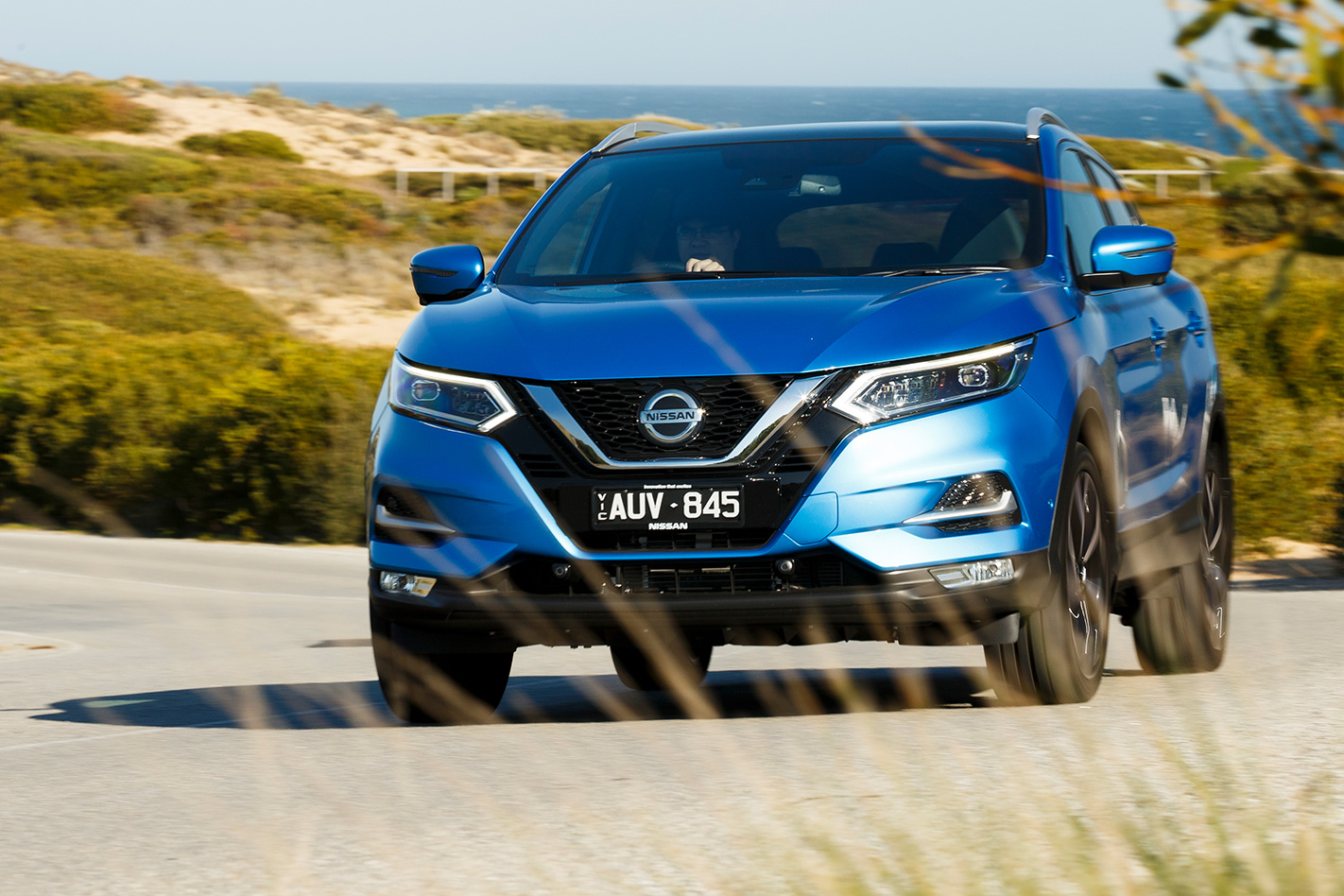
Mitsubishi Eclipse Cross: First, the good news. Though there’s no element of choice in the Eclipse Cross’ engine department, with all models powered by the same 1.5-litre turbocharged engine, that engine happens to be a strong, willing engine with plenty of torque (250Nm for those that are counting) for everyday driving. Connected to a continuously-variable automatic, it proves to be perfectly suited to around-town motoring with decent thrust to deal with the occasional bursts of acceleration, while also being smooth and reasonably refined.
It’s a shame the steering and suspension don’t have the same level of competence or polish. The steering is over-assisted to the point that it’s too sensitive to minor inputs, which can lead to a ‘wandering nose’ when highway cruising, while it also transmits noticeable torque steer when accelerating hard.
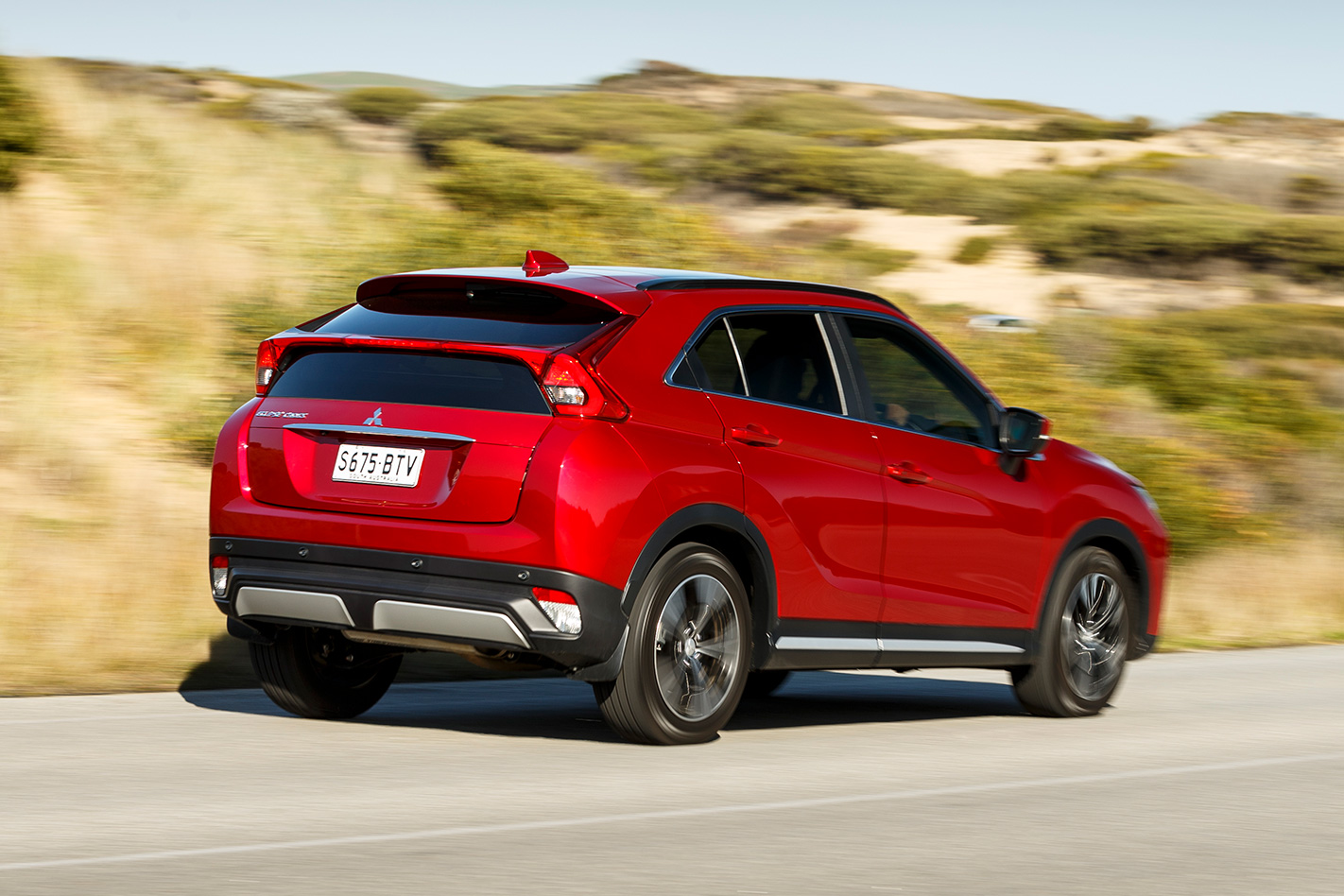
The suspension meanwhile pitches and rolls a lot on typically lumpy country roads, and tends to be upset by road imperfections that wouldn’t bother many of its rivals. Like most new cars, it’s fine at suburban speeds but venturing onto a highway – especially one that is less than smooth – quickly reveals the Eclipse Cross’ dynamic shortcomings and poor ride comfort.
Our Opinion
Mitsubishi’s top-grade Eclipse Sport has the benefit of a slightly sharper price of entry and being a younger vehicle, but it’s the Nissan Qashqai Ti that impresses us more.
The Nissan’s feature set is more generous when it comes to things that count, like an infotainment system that – though old – is easy to use and features a built-in satellite navigation function. There’s also no denying the greater wow factor of its huge and uninterrupted panoramic glass sunroof, not to mention its cool ‘watch strap’ leather upholstery.
But the most important advantage the Nissan has is the core engineering that lies beneath. It’s more comfortable to be in thanks to its supportive seats, and though its suspension is a little firmer than the Mitsubishi it’s actually better for long journeys simply because it’s tuned properly. Like a boat in rough waters, the Eclipse Cross never feels settled.
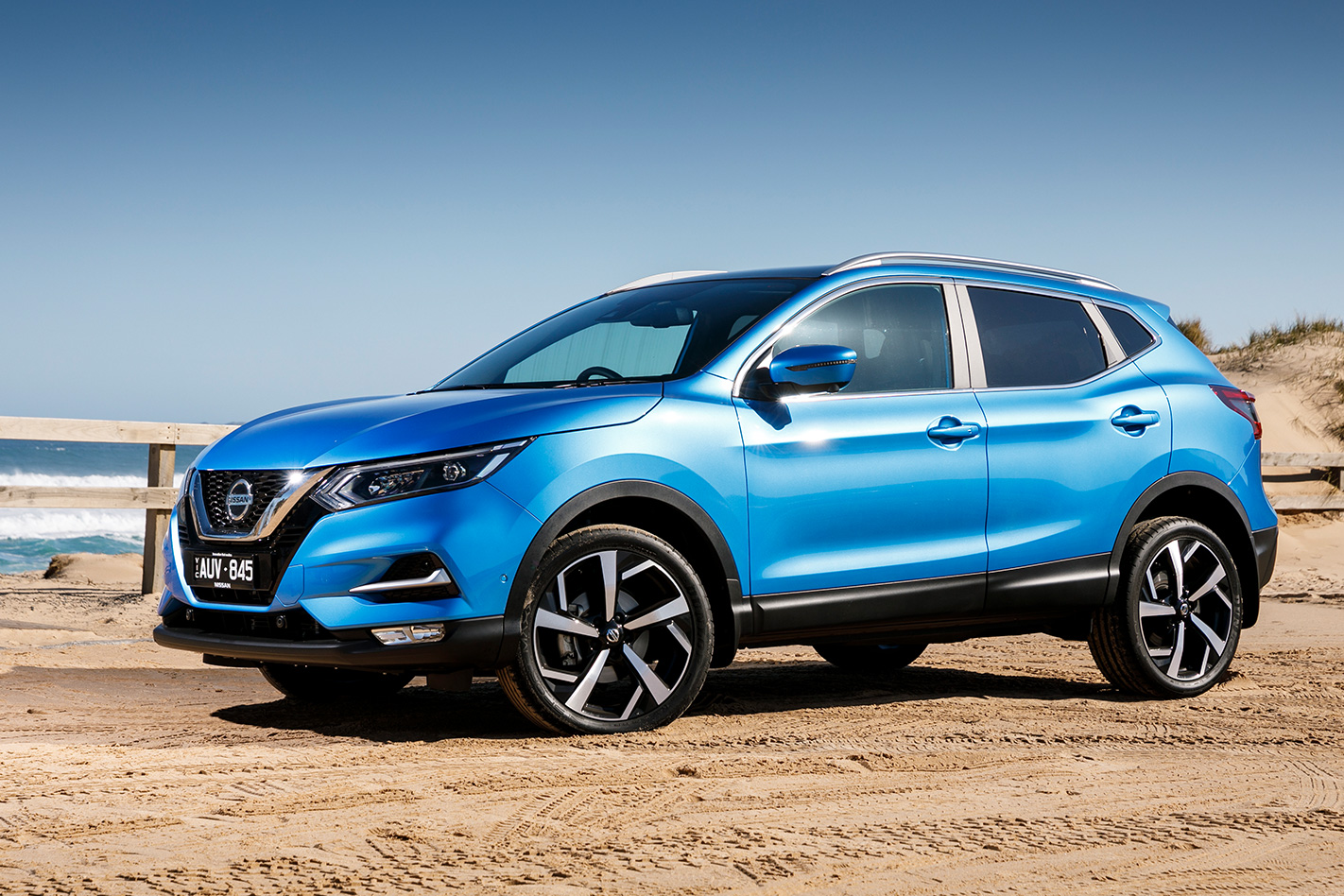
That said, the Mitsubishi’s turbocharged engine is a great powertrain and its sliding rear bench does introduce an element of adaptability to its cabin layout that some may find useful. On the whole, however, it’s the Nissan that simply feels like a better-resolved car.



